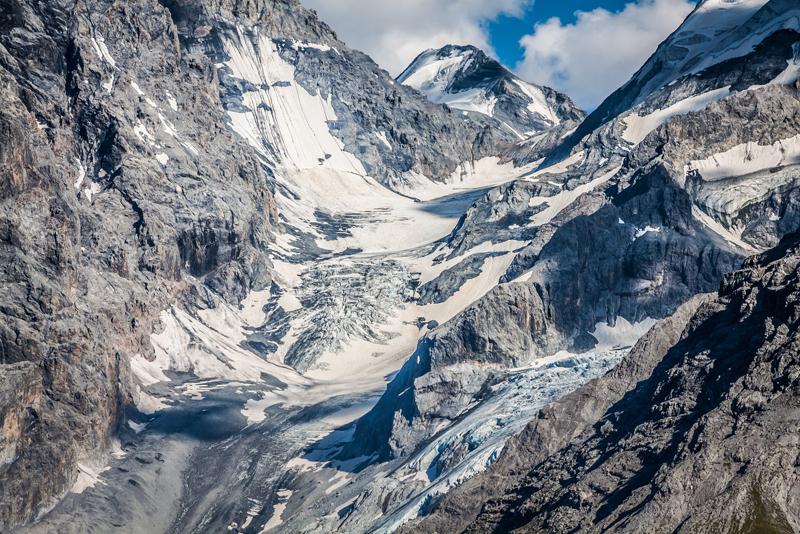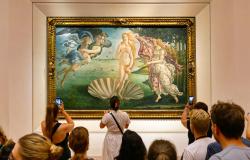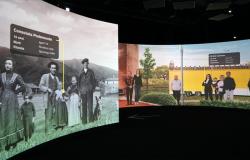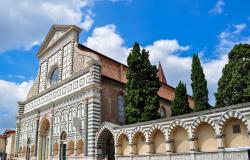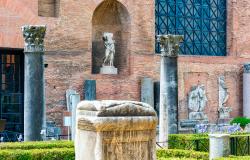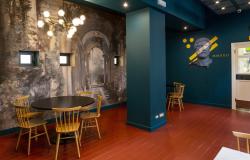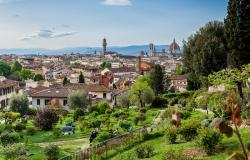We’ve all heard the many arguments made by politicians and scientists on the topic of global warming and it’s up to us how we interpret the information we are given. If you want to experience the reality of climate change, then a visit to the South Tyrol Museum of Archaeology (Museo Archeologico dell’Alto Adige) could help you make a decision on how you feel about the debate.
Situated on Via Museo 43 in the town of Bolzano, a one and a half hours drive north of Verona, the museum is hosting a special exhibition called “Frozen Stories”.
The exposition includes objects that have lain undiscovered inside the glaciers until they became evident by the reduction in the glacial ice. The periodic thaws have revealed as many questions as they have answers, and one in particular is, what was life like for the people who lived on the glaciers?

The melting ice has revealed evidence of human habitation in these frozen landscapes dating back thousands of years, bringing with it fresh research into glacial archaeology.
The “Frozen Stories” exhibition presents over 30 finds from the glacial Alps and its neighbouring regions; some of these exhibits have only recently been catalogued and will be on show to the public for the first time. These finds cover a period in history dating from prehistory through to the 20th century.
The exhibits that have been recovered give an insight into the lives of the “ice dwellers”, who despite the harshest of conditions prospered in the inhospitable Alpine terrain. The focus of “Frozen Stories” is on human interaction, therefore the displays are not in a chronological order, but in a way to show the motives and drive behind the conscious decision of people to live within this desolate landscape.
Objects on display include items used for trading and hunting and also weapons; each one tells its own story, be it of necessity or adventure, courage or despair. Aside from the physical items on display, the exhibition is a feast for multimedia fans, with audio, video and photographic installations to entertain and inform.

Undamaged glaciers are important for the world’s ecological balance, and scientists are searching for a solution to prevent any further melting of the precious ice and so the exhibition concludes with a slide show called Visionen, by the Austrian photo-artist Lois Hechenblaikner. Projected upon a 42” screen, large format images of the Southern Tyrol’s glaciers depict the human effort in this race against time to document the history and needed conservation of the remaining Alpine glacial fields.
The entrance to the museum is a mock glacier and visitors enter through the ice-blue entrance into a world usually hidden from view. The tour takes the viewer through the stages of glacial development including climate change that has occurred in the Alps since the birth of the great ice structures, through to the melting that is occurring now. The exhibition also addresses the archaeological consequences of climate change and the issues and effects this has on the current environmental issues with the Alps.
Unlike conventional archaeology, the study of glacial archaeology is still a relatively new practice and the exhibition addresses the new techniques used in the development of this new field of scientific study.
 No trip to the museum would be complete without the chance to meet the internationally famous “Ötzi the Iceman”. Also sometimes referred to as the Hauslabjoch Mummy, he is Europe’s oldest naturally mummified human who lived around 3,000 BC during the Neolithic (new Stone Age) period. He is named after the Ötztal Alps, where he was found on Thursday, September 19, 1991 by hikers Erika and Helmut Simon, from Nuremberg in Germany. He was discovered after the couple decided to make a detour; they were passing a crevice that was filled with melt-water when they spotted something brown, and, as they investigated, they discovered the human corpse half buried in ice.
No trip to the museum would be complete without the chance to meet the internationally famous “Ötzi the Iceman”. Also sometimes referred to as the Hauslabjoch Mummy, he is Europe’s oldest naturally mummified human who lived around 3,000 BC during the Neolithic (new Stone Age) period. He is named after the Ötztal Alps, where he was found on Thursday, September 19, 1991 by hikers Erika and Helmut Simon, from Nuremberg in Germany. He was discovered after the couple decided to make a detour; they were passing a crevice that was filled with melt-water when they spotted something brown, and, as they investigated, they discovered the human corpse half buried in ice.
Since his discovery scientists have x-rayed, excised and examined his body to great detail; initial documentation recorded that he was aged in his mid-forties and of a slender yet sinewy build. He was found to be wearing three layers of clothing including shoes with bearskin soles. His possessions included unfinished arrows, a copper bladed axe, flint dagger and a fire-starting kit that comprised of embers wrapped in leaves.
Further examination has revealed he had no wisdom teeth or a twelfth pair of ribs and had a host of age-related ailments, including hardened arteries, joint wear and gallstones. His gut revealed he suffered from parasitic worms and, possibly from working with metal ore, he had high levels of arsenic within his system.
He was found to have a recent arrow wound, but science has come to the conclusion that Ötzi met his demise at the hand of another and was murdered by a blow to the head.

The almost perfect mummification has led to many other discoveries and it has been possible to track his movements through the glacial regions of the Alps. Analysis of pollen found inside the body has led to the conclusion that he was killed in late Spring or early Summer, and this pollen also points to various regions within the mountains that he would have frequented prior to death.
One of the most remarkable discoveries came when his DNA was taken and tested alongside donations of blood from over 3,500 people; scientists then proved that the Iceman has a minimum of 19 living relatives within the Tyrol regions.
The “Frozen Stories” exhibition is a joint project between the museum and the Office for Archaeological Heritage of the Autonomous Province of Bolzano.
“Frozen Stories” runs until 10th January 2016, with the exhibition having excellent disabled access. The tour takes on average two hours, so it’s best to arrive giving yourself an unhurried visit to experience the full potential of the collection.
The museum opening hours are: Tuesday – Sunday: 10 am – 6 pm with the last permitted entry being 5.30 pm. The museum is usually closed on Monday, except for the months of July, August and December.
Photos courtesy of South Tyrol Museum of Archaeology.
